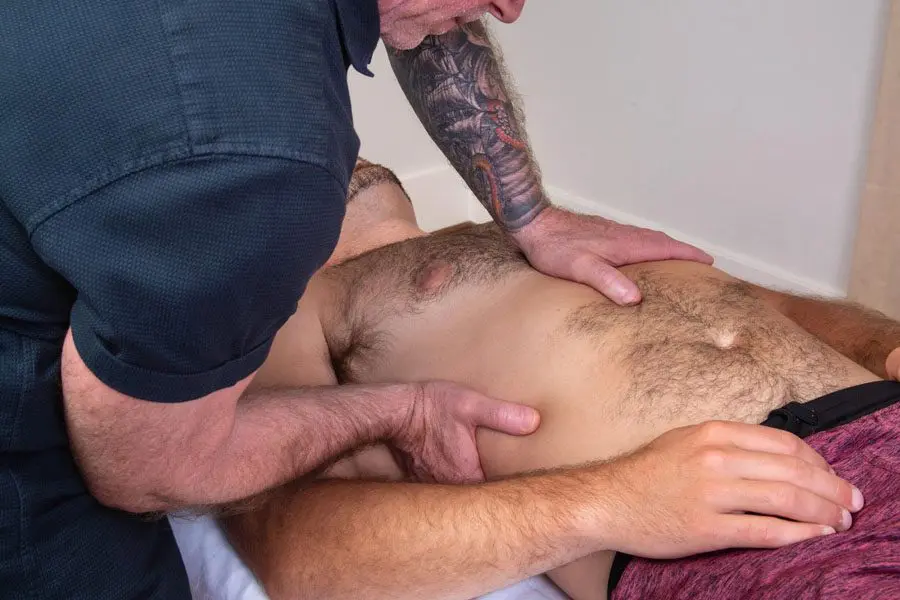Understanding Visceral Manipulation

What is Visceral Manipulation (VM)?
Visceral manipulation (VM) is a unique and special form of gentle manual therapy that addresses the visceral (organ) systems in the body and works with your own body’s ability to heal itself and achieve balance. The function of the viscera relies upon interdependent movements that occur within and around all the organs and each organ has a fascial connection to the musculoskeletal system. You are a web of interconnected tissues and each one of your organs relies upon interdependent movements that occur within and around all other organs. When you have an adhesion between two tissues or organs, there is a lack of free movement. This results in a decreased function due to an alteration in the actual structure. For example, think about the number of movements that occur in your chest. You take about 24,000 breaths a day, and your heart beats about 120,000 times a day. If you consider all the different articulations in the thorax, you will experience approximately three million different movements each day in this area of your body. Imagine an adhesion (a stickiness) between two structures in your thorax. Now, instead of the natural flow of interconnected movements, you have an alteration in one location that will affect the axis of all other movements. Due to millions of interdependent movements occurring each day, this one “simple” adhesion can have broad implications, magnified over time by the millions of repetitions. Adhesions can develop due to many factors: trauma, dehydration of tissues, surgery, infections, inflammation, and all forms of stress.
Who Developed VM?
Jean-Pierre Barral is an osteopathic physician and registered physical therapist from France. He first became interested in the movement of the body (biomechanics) while working at the Lung Disease Hospital in Grenoble, France, with Dr. Arnaud, a recognized specialist in lung diseases and a master of cadaver dissection.
Barral was able to follow patterns of stress in the tissues of cadavers as he studied biomechanics in living subjects. This introduced him to the visceral system, its potential to promote lines of tension within the body, and the notion that tissues have memory.
Barral’s clinical work with the viscera led to his development of this form of manual therapy that focuses on the internal organs, their fascial environment, and the potential influence on structural and physiological dysfunctions. The term he coined for this therapy was visceral manipulation.
Jean-Pierre Barral began teaching visceral manipulation in the United States in 1985. Since then he has trained a team of International Instructors that teach visceral manipulation seminars around the world. He has authored numerous textbooks for healthcare professionals and has also authored a book for the general public, Understanding the Messages of Your Body, which discusses the important link between our organs and our emotions.
What Might I Expect From a Visceral Manipulation Session?
An initial session will typically last 1 and 1/2 hours and will consist of three parts; an initial unbiased evaluation, a dialogue about your history and symptoms, and treatment. Follow-up sessions will last between 30-40 minutes.
In order to achieve an unbiased evaluation, Dr. Mariotti asks that you initially refrain from sharing your symptoms. By evaluating you without any prior knowledge of your symptoms, it will be easier to localize the root cause. Based on this evaluation and the discussion that follows, during which time you will be encouraged to share your story, Dr. Mariotti will comprise the most appropriate treatment plan to address your specific issues. However, if you feel it is necessary to inform him of your symptoms, or are simply inquiring about whether this work can be of any help in your particular case, please do not hesitate to ask.
